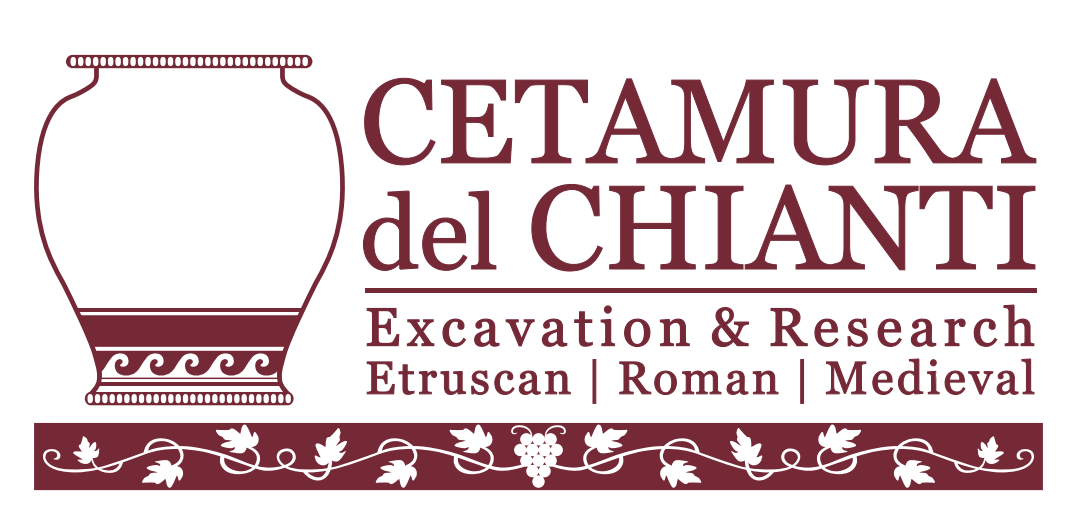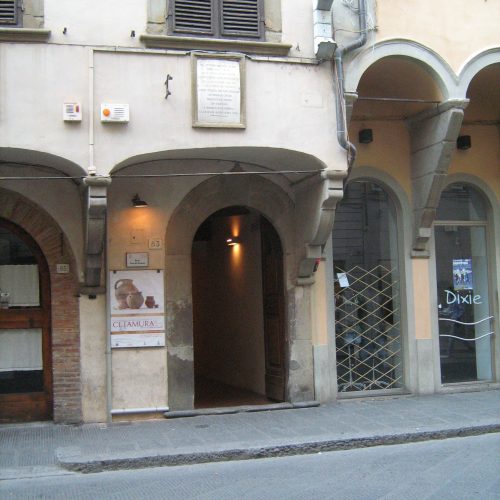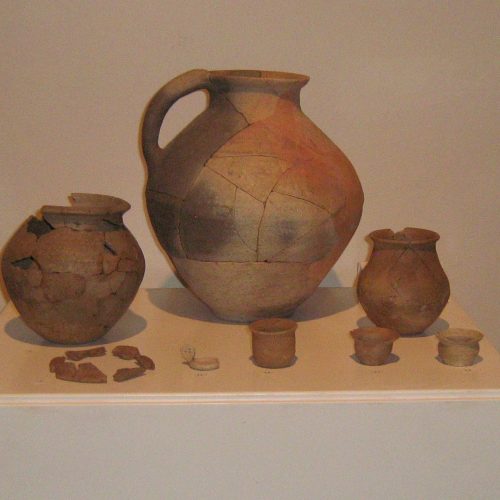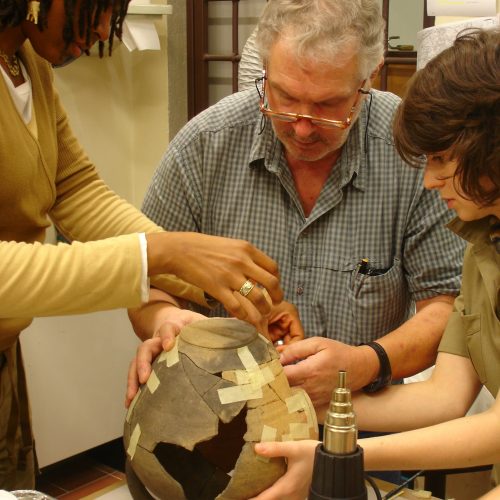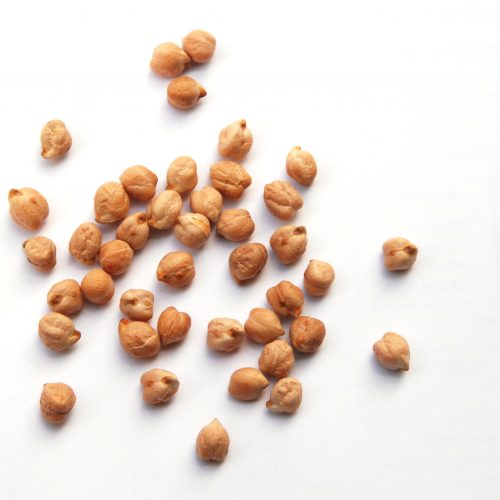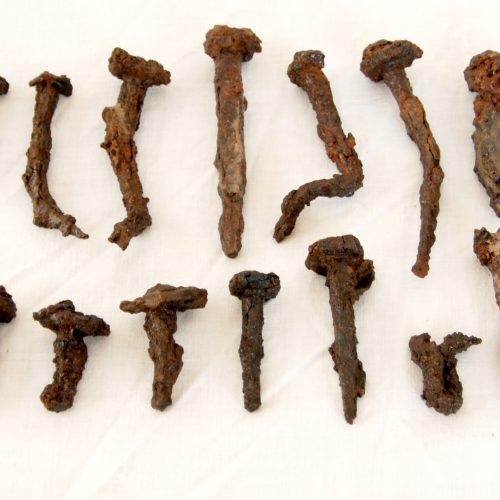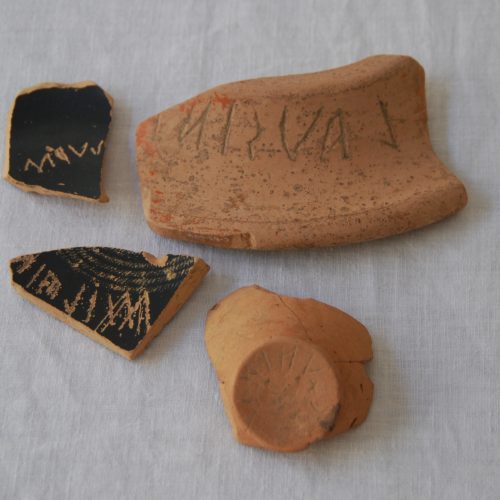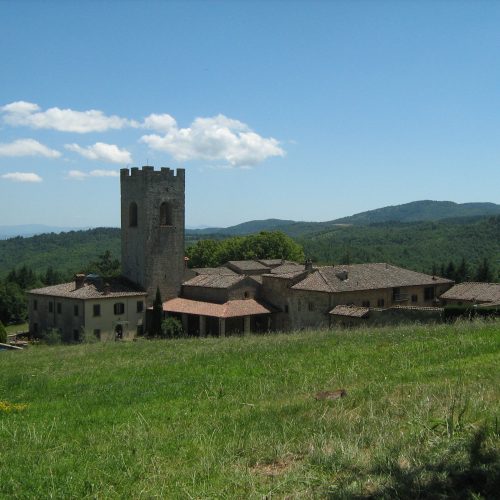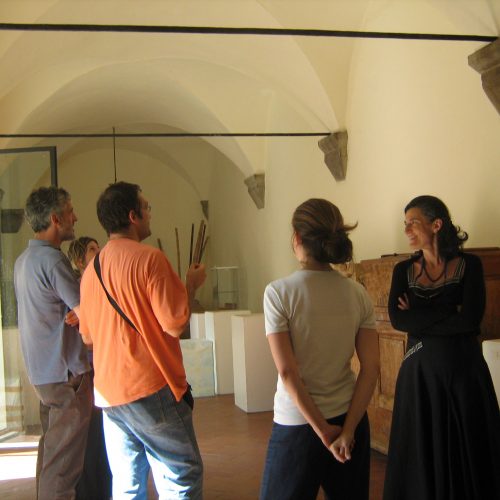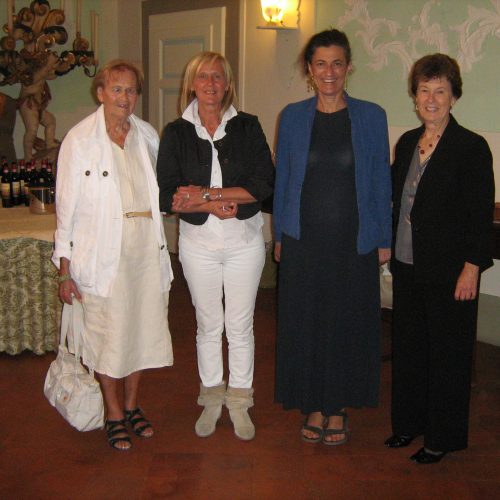THE LEGACY OF ALVARO TRACCHI
The Sanctuary of the Etruscan Artisans at Cetamura del Chianti
The exhibition on the Sanctuary of the Etruscan Artisans was held in June and July of 2009 in the city of San Giovanni Valdarno, the hometown of Alvaro Tracchi, who discovered the site of Cetamura in 1964. The venue was the restored Casa Masaccio, where Masaccio, the famous Renaissance painter from San Giovanni, grew up [a.]. The Comune of San Giovanni provided essential support. After the show closed in San Giovanni, it moved to a second venue at the Badia a Coltibuono of Gaiole in Chianti [g., h., i.], near the hilltop of Cetamura.
The artisan theme was key in the exhibition, since the show featured discoveries from the artisans’ zone of Cetamura, where a sanctuary was identified in 2006-2007. The Sanctuary of the Etruscan Artisans is known from the stone foundations that have survived, featuring a trapezoidal structure facing southeast, with plenty of evidence of rituals taking place at altars, in chapels and in votive pits with offerings to the gods.
The exhibition itself and the catalogue of the show were assembled by Nancy de Grummond with the collaboration of Renzo Giachetti and Nòra Marosi. Ana Gonzalez (Bianchi) of SACI designed the wall panels, and student assistants from Florida State University were Mery-Et Lescher, McKenzie Lewis, and Kathryn Reinhardt.
THE MAIN VOTIVE PIT
One pit in the ground contained more than 50 Etruscan items that had been offered, probably in a ritual that may have lasted for hours, especially pottery, that were broken and burned so that they were no longer usable for humans [b.]. The restoration of these items was undertaken by the conservation department of Studio Arts College International (SACI) in Florence, under the supervision of Renzo Giachetti and Nòra Marosi [c.].
CHICKPEAS AND IRON NAILS
In another offering area was the rare find of a cooking pot that, according to laboratory analysis, was filled with cooked chickpeas [d.], and was the centerpiece of a votive ensemble. Next to the cookpot was a broken goblet for wine, suggesting that the gods were offered a nice soup and a Chianti drink to wash it down. Also frequent in the votive pits were objects made of iron [e.], probably made by the artisans who worked iron in an area adjoining the sanctuary. Most popular were nails of all different sizes and shapes. Other offerings included coins, gems, rings, weaving implements, and other foodstuffs such as grapes, apples, and grain.
GODS OF THE PLACE
Inscriptions discovered in the area of the ceramic kiln in the artisans’ zone [f.] almost at the same moment as the votive pits in the sanctuary revealed the names of two little-known Etruscan gods worshipped at Cetamura, Lur and Leinth, thought to be deities of fate and fortune. Two other inscriptions from Cetamura name two Etruscans who made offerings: Cluntni and Lausini.
